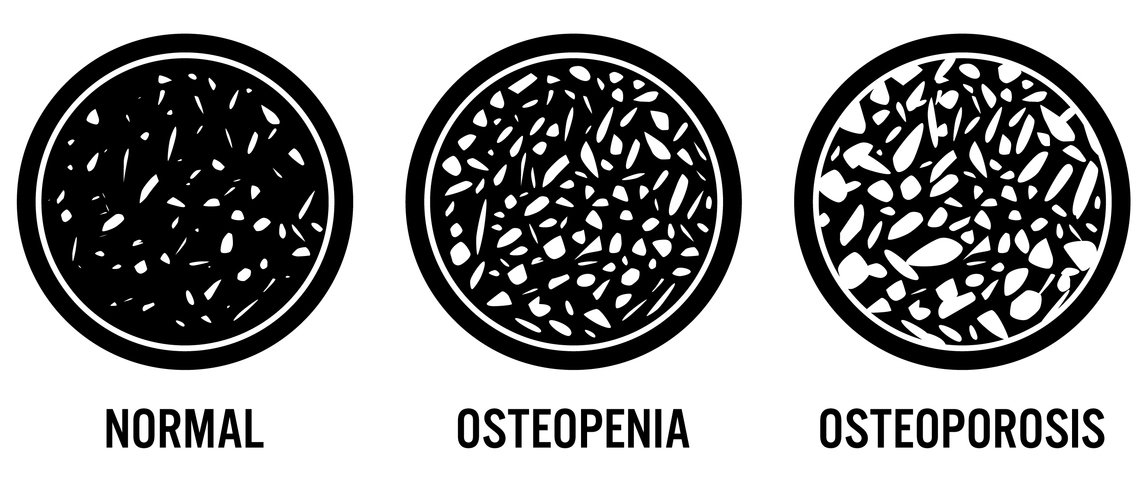Having a bone density test
Your bone density test: some frequently asked questions:
There so many of different kinds of bone density tests and nearly all of them are referred to by their acronyms. Many people feel a bit confused as to what all these acronyms mean and what each test measures.
Here is a list of those most common tests and a brief explanation of what they do:
- DXA (Dual Energy X-ray Absorptiometry) is a scan that measures the bone of your spine, hip or your total body. If your health care provider orders a DXA, you might want to ask what body parts your particular test will measure.
- PDXA (Peripheral Dual Energy X-ray Absorptiometry). This test measures bone of your wrist, heel or finger.
- SXA (single Energy X-ray Absorptiometry) measures the density of bone in your wrist or the heel of one foot.
- QUS (Quantitative Ultrasound) uses sound waves to measure bone density at the heel, shin bone and kneecap.
- QCT (Quantitative Computed Tomography) is frequently used to measure the density of your spine, but can be used at other places also. Again, if this test is ordered, ask if it is being used for your spine or some other other body part.
- PQCT (Peripheral Quantitative Computed Tomography) is another test that measures your wrist.
- RA (Radiographic Absorptiometry) uses an X-ray of the hand and a small metal wedge to calculate bone density
- DPA (Dual Photon Absorptiometry), like the DXA listed above, measures the spine, hip or even your total body
- SPA (Single Photon Absorptiometry) measures the density of the bones in your wrist
Many people feel confused by so many test choices
Often companies
will come to Senior Centers or Health Fairs and offer one or more of the
texts listed above. Before you sign up consider the following:
1. Dxa, or dexa scan is the most complete bone density test. It measures both the spine and the hip, the two areas at serious risk for fracture. Because the dexa scan is one of the most common and accurate screenings, I have provides some pages describing it and explaining the results. Click onbone density test
2. The wrist is often one of the first areas where women develop a fracture. The PDXA, SXA, PQCT, SPA tests all measure the wrist.
3. DPA and SPA are seldom used for Osteopenia and Osteoporosis screening.
How are the results of these tests reported? Are the reports simple to read and understand?
Results of all these tests are given in terms of T-Scores and Z-scores. You will want to take time to understand these two terms: T-score and Z-score. There is a full explanation at understanding your bone density test results

Who should have a bone density test?
1. Any woman age 65 or older.But most women have their first screening toward the end of menopause. Medicare (US health insurance for those 65 years of age and older) will pay for a dexa scan once every two years. Other national insurance plans differ. Do check with your health care provider.
2. Any person with risk factors for Osteoporosis, should discuss having an test with his or her physician even at a younger age. To review these factors, go to: Osteopenia, Osteoporosis Risk Factors
3. Anyone who has a bone fracture after the age of 35, should discuss having a bone density test - especially if the fracture occurred without severe trauma.
How long will my test take?
A dexa scan, which is one of the most complete tests, takes about 20 minutes. It is painless. You do not need to fast beforehand. It can be done at any time of day. There are few medical screenings that are less intrusive.
How much will it cost?
Most health insurance will cover a doctor prescribed dexa scan. If you are having one of the other forms, it is worth contacting your medical insurance company to make sure they will cover the examination. Your physician many have to 'argue' for the necessity of your screening if you are not a post menopausal women...but that can be done easily. Just remember that you want to have your insurance company "OK" the procedure before you have it.
If you do not have insurance, and your physician and you think that you should have a bone density test, you can call around to find the cost.
In 2004 many diagnostic imaging groups were charging about $250 for this test.
Here are your Osteoporosis and Osteopenia Treatments
To keep up with the latest news and research about Osteopenia and Osteoporosis, do subscribe to my free monthly newsletter. I am always reading the research and I pass along new studies and tips in the newsletter: Osteopenia Updates

